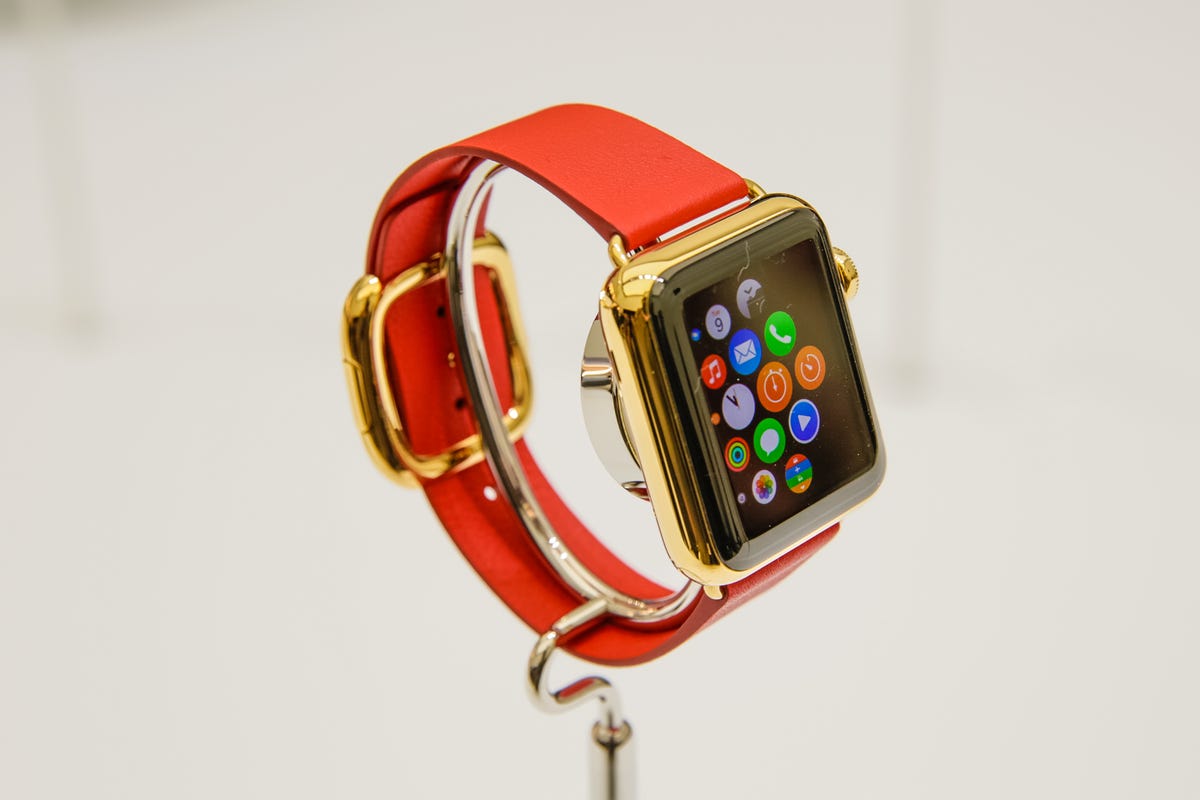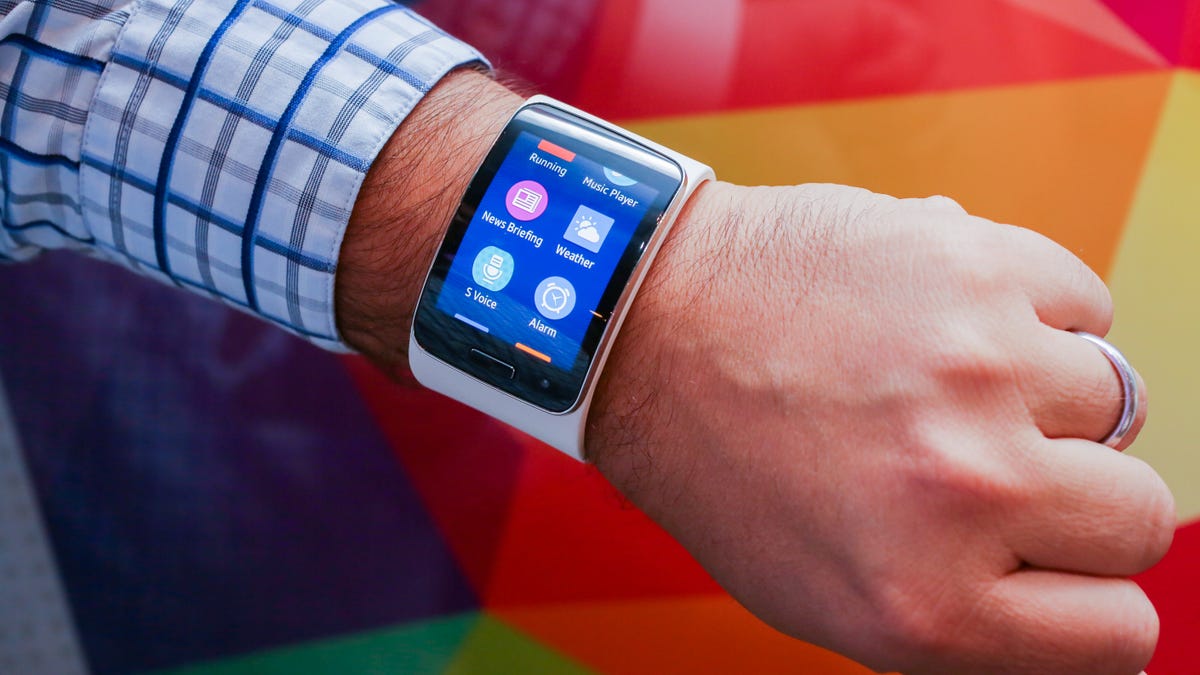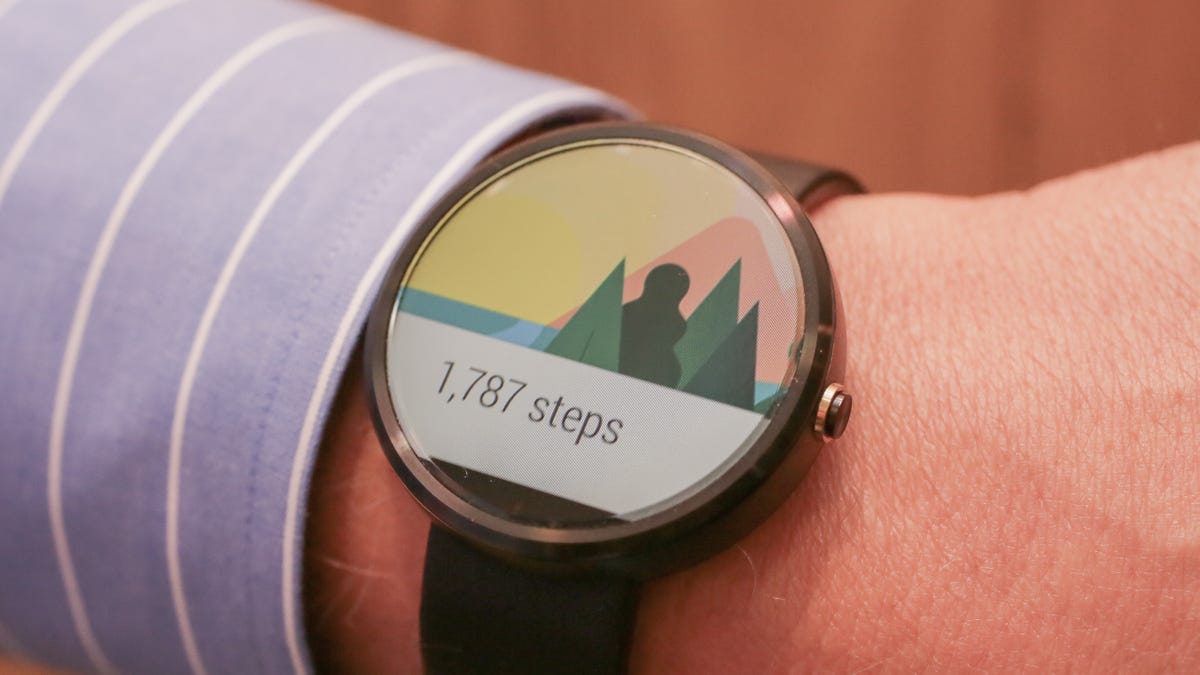
CNET
Without a doubt, 2014 is the year of the smartwatch. First, Samsung debuted its Gear devices, then LG and Motorola piled on with their Android Wear wearables, and now that Apple has joined the fray, with its Apple Watch. Needless to say, you can expect to see smartwatches everywhere in the near future.
Here, we’ll compare the Apple Watch with today’s newest smartwatches, the Moto 360 and Samsung Gear S , and the longtime favorite Pebble Steel . Just a note that since we only got a glimpse of the Apple Watch, there’s still a lot we don’t know about how it performs, or what’s inside.
| Apple Watch | Motorola Moto 360 | Samsung Gear S | Pebble Steel | |
|---|---|---|---|---|
| Compatible with | iOS | Android | Android | Android and iOS |
| Shape | Rounded square | Round | Square | Square |
| Material | Steel, Aluminum, or 18K Gold | Stainless steel | Plastic | Stainless steel |
| Default strap | Varies by model | Leather | Rubber | Stainless steel |
| Removable band? | Yes | Yes | Yes | Yes |
| Water resistance | Yes, details TBA | IP67 (30 minutes, 3 feet) | IP67 (30 minutes, 3 feet) | 5 ATM (water resistant up to 50 meters) |
| Connectivity | Bluetooth 4.0 LE | Bluetooth 4.0 LE | Bluetooth 4.1 LE, 3G, and Wi-Fi | Bluetooth 4.0 LE |
| Charging | Included charging cradle | Included charging cradle | Included charging cradle | Proprietary cable |
| Colors | Stainless steel silver, yellow gold, rose gold, black, grey, and aluminim silver | Black, silver | Black, white | Black, silver |
| Extras | Heart-rate monitor, accelerometer, remote camera | Pedometer, heart-rate monitor | 3G, Wi-Fi, heart-rate monitor | Pebble apps |
| Price | Starts at $350 | $250 | TBA | $250 |
Design
The most obvious difference between these smartwatches is in their design. Hoping to appeal to as many people as possible, Apple is the first to offer up two sizes with its Watch; 38mm (1.49 inches) tall and 42mm (1.65 inches) tall. The smallest option is more compact than the other smartwatches, which makes it far more appealing to anyone with petite wrists. At the other end of the spectrum, the Gear S is one of the biggest models, making it a better fit (literally) for larger arms. The Moto 360 and Pebble Steel are about the same size, and fall between the Apple Watch and Gear S.
By far, the Apple Watch has the most style options, with three different models, six finishes, and six watchbands. That makes it the most versatile as a fashion accessory for both men and women. Both the Pebble Steel and Moto 360 have masculine designs that emulate analog watches, while the Gear S looks like a tiny smartphone embedded into a wristband.
The bottom line here is that all of these watches are best suited for those with big wrists, with the exception of the smaller Apple Watch.


Sarah Tew/CNET
Compatibility
The Apple Watch will pair with the upcoming iPhone 6 and iPhone 6 Plus, as well as the current generation iPhone 5, iPhone 5S, and iPhone 5C. The Moto 360 is running Android Wear, and needs to pair with a smartphone running Android 4.3 or later. The Pebble Steel is compatible with newer versions of both Android and iOS. Lastly, the Samsung Gear S can operate independently of a smartphone, and can also pair with Samsung devices, though we are still waiting on more details from the company on how that will work exactly.
Picking a smartwatch right now comes down to what kind of phone you use. If you’re on team iPhone, you’re limited to the Apple Watch or the Pebble line. And keep in mind that if you ditch your iPhone for another platform, that Apple Watch becomes nothing more than a pricey paperweight. On the other hand, with Android whatever phone you choose, and however often you switch devices, the Moto 360, Samsung Gear S, or any other Android Wear watch on your wrist will chug along without complaint.
No fuss fitness
We all know we’re supposed to get up move about over the course of the day, and wearable tech has always nudged us in that direction. The Pebble Steel is the least capable fitness tracker of our bunch here: it packs an accelerometer and gyroscope, but a reliance on lackluster third-party apps and the lack of even a simple pedometer ultimately limits its utility.
The Moto 360, Samsung Gear S, and Apple Watch have the potential to be transformative here. They’re packed full of tracking tools, including accelerometers, and heart rate monitors — the Samsung Gear S also boasts a barometric sensor. Just as important as the data these devices can collect is what they can do with it. Google Fit and Apple HealthKit will collect all of your data and serve it up to you and third-party app developers, so you’ll have a myriad of ways to track your activity, or lack thereof.
Android Wear was first out the gate here, and an Android Wear smartwatch will already show you the number of steps you’ve taken, and works with apps like Runkeeper to give you a quick glance at your exercise regimen. Based on our admittedly limited look, Apple’s implementation is arguably a lot slicker: the built-in Activity and Workout apps give you a quick glance at how sedentary you’ve been, and let you craft impromptu workouts on the fly — perfect for burning off the calories in that donut while you’re on your way to get it.


CNET
The mobile wallet
Apple Pay is something of an outlier here. When the mobile payment syst em launches in October it’ll turn the iPhone 6 and iPhone 6 Plus into a mobile wallet capable of interfacing with retailers, care of NFC connectivity. It’s the same technology Google’s used for years with Google Wallet.
However, so far Google hasn’t integrated Wallet into Android Wear. That means you can’t use the Moto 360 or Gear S to pay for your stuff. The Pebble Steel doesn’t have this feature either, nor does it seem like there is any plan to add it in the future. For now, it’s a novelty to tap your wrist to a credit card terminal to make a purchase, but it could some day become the norm. For now, Apple is at the front of that movement.
Looking ahead
No one needs a smartwatch. To the cynical eye they are at best a fashion statement, a $200 (or more) accessory that doubles as a medium to display snippets of information already available on the smartphones we tote with us everywhere we go.
But that persistent, symbiotic relationship is precisely why smartwatches are so awesome. With Android Wear and the Apple Watch, we see two (mildly) distinct approaches at accomplishing the same thing: creating the missing link between personal communicator and discrete notification system that many of us have always known we kinda, sorta wanted. But while the approach is similar, the opportunities each platform affords are going to vary dramatically in the coming months.



